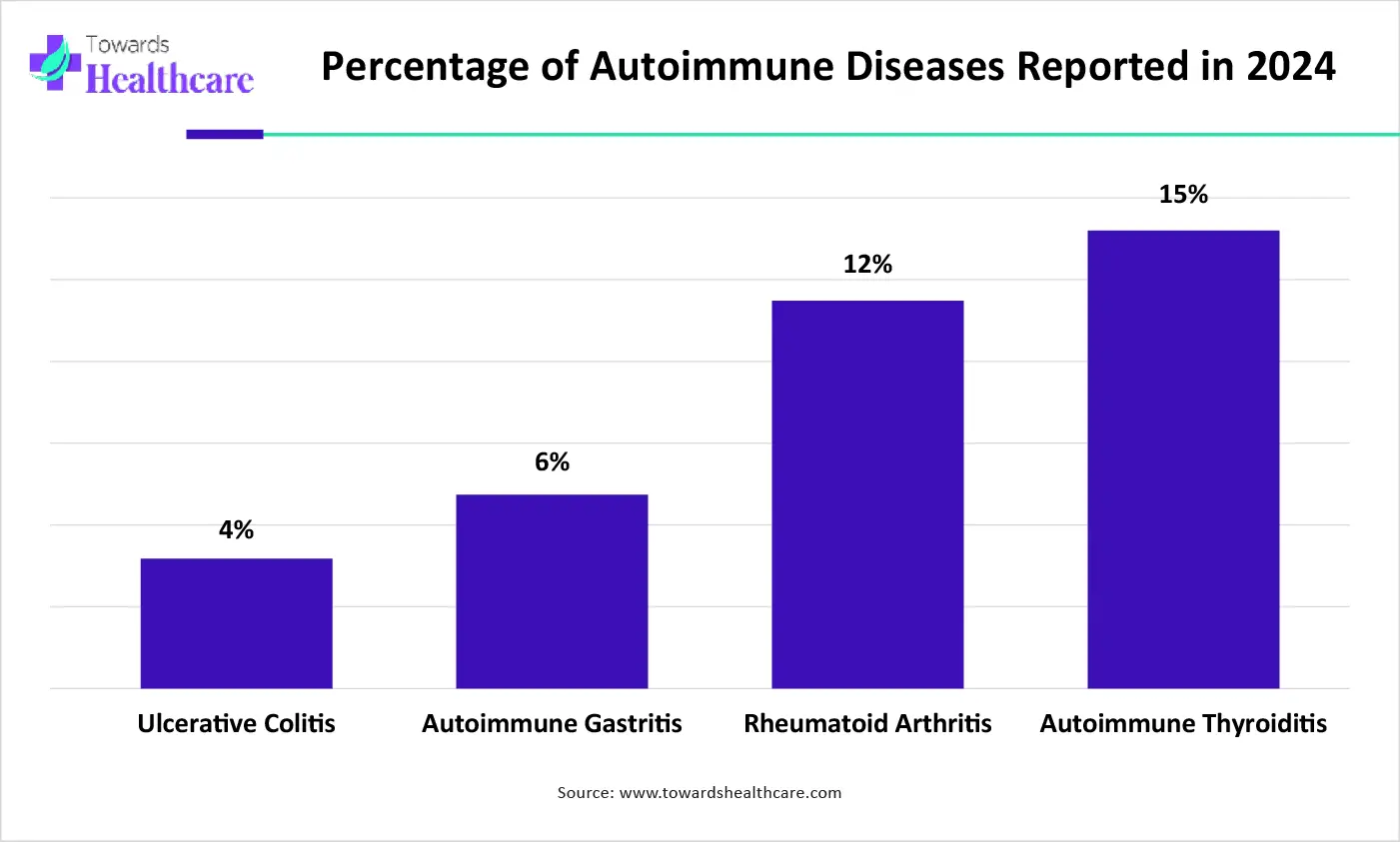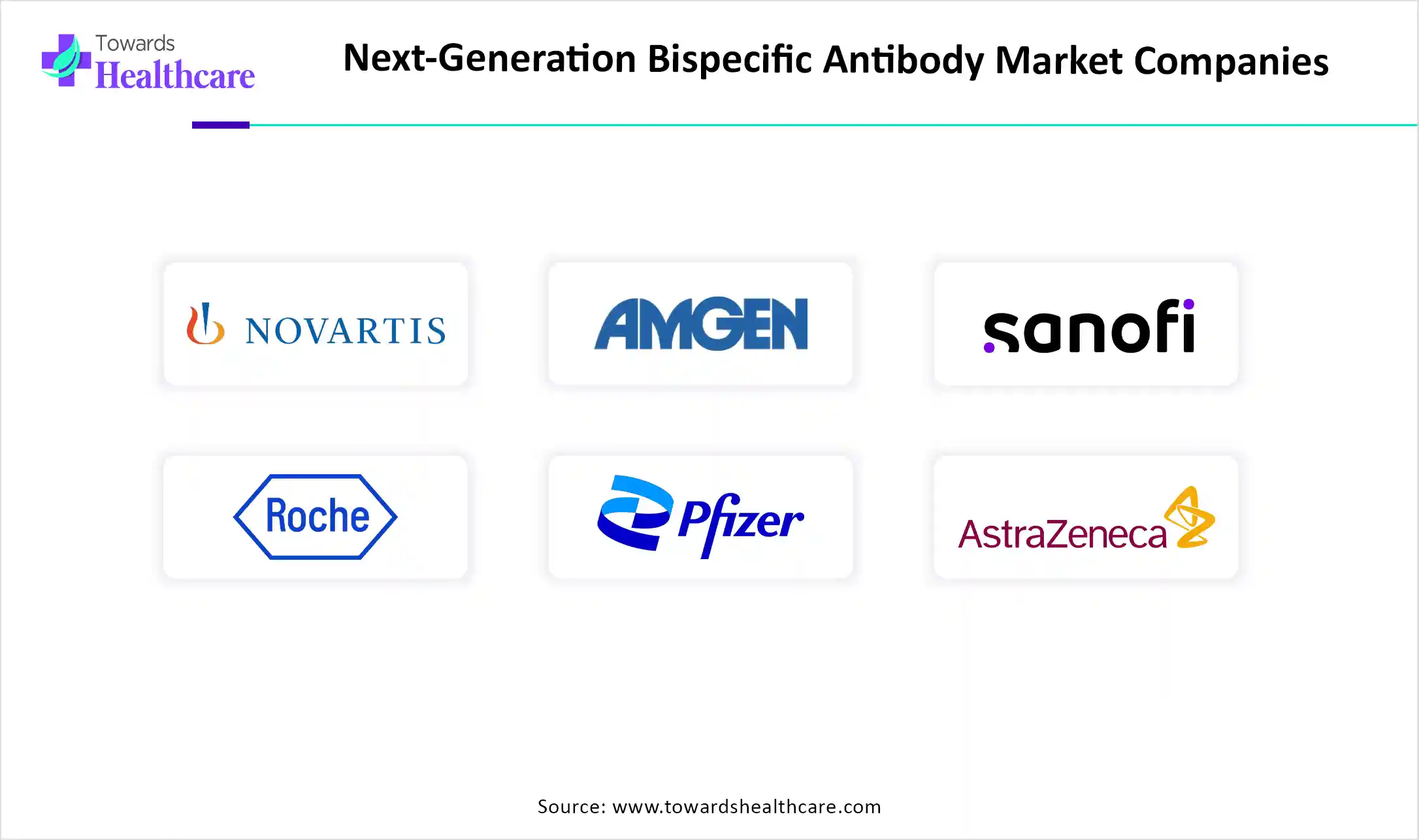November 2025

The next-generation bispecific antibody market is rapidly advancing on a global scale, with expectations of accumulating hundreds of millions in revenue between 2025 and 2034. Market forecasts suggest robust development fueled by increased investments, innovation, and rising demand across various industries.
The next-generation bispecific antibody market is contributing to enhancing the precision medicine for the treatment of diseases such as cancer, autoimmune diseases, infectious diseases, etc. At the same time, the use of AI is also contributing to the same by improving the analysis and drug development process.
Moreover, there is a rise in new collaborations, developments, and launches globally. Similarly, advancing industries and research are also driving the market. Furthermore, bispecific T-cell engagers and immune cell engagers are dominating the market. Thus, all these factors are enhancing the market growth.
The next-generation bispecific antibodies (BsAbs) provide advanced therapeutic strategies, as they effectively bind to 2 targets simultaneously. They help in precise drug delivery, cell redirection, and dual pathway blockade. Thus, these advantages help BsAbs to transform as well as reshape the precision medicine used in cancer or autoimmune disease treatments. At the same time, the synergistic effect of BsAbs in combination therapies is also being developed. Furthermore, it also helps in advancing therapeutic protein engineering, which aids in overcoming the limitations of a single-target approach.
By integrating AI with next-generation bispecific antibodies, the research and development, along with the treatment approaches, can be enhanced. At the same time, AI can be used in analysis as well as in predicting the bispecific targets with the help of machine learning during the development process. Furthermore, the use of AI in the development of new combination therapies is also increasing. Additionally, the specificity as well as the safety of these treatment approaches developed by next-generation bispecific antibodies can be enhanced with the use of AI.
Growing Disease
The incidence of diseases such as cancer, autoimmune, or infectious diseases is growing. This, in turn, increases the demand for next-generation bispecific antibody treatment options. At the same time, the failure in the treatment of these diseases also increases their acceptance rate. Furthermore, due to their target-specific action, the side effects are minimized. Thus, to deal with this growing global health burden, the use of next-generation bispecific antibodies is increasing. Hence, the growing diseases drive the next-generation bispecific antibody market growth.

The graph represents the percentage of autoimmune diseases reported in year of 2024. It indicates that there will be a rise in autoimmune diseases. Hence, it increases the demand for next-generation bispecific antibody treatment options for its effective management. Thus, this in turn will ultimately promote the market growth.
Safety and Stability Concerns
The use of bispecific antibodies in certain cases can lead to intense immune responses. Moreover, it can lead to fever, hypotension, or even neurotoxicity. At the same time, protein aggregation as well as the short shelf life of these antibodies can lead to stability issues. Thus, these factors can affect the stability and safety of the patient.
Advancements in Autoimmune Disease Treatment
The growing incidence of autoimmune disease is increasing the demand for the use of next-generation bispecific antibody treatment options. At the same time, new developments in these antibody treatments for enhancing the target-specific actions and restoring the body's natural defence mechanism are also increasing. Furthermore, medications for rheumatoid arthritis (RA) and inflammatory bowel disease (IBD) are also increasing. Additionally, new biologics are also being developed with the use of bispecific antibodies. Thus, these developments promote the next-generation bispecific antibody market growth.
For instance,
By type, the bispecific T-cell engagers (BiTEs) segment held the largest share of the market in 2024. BiTEs increased due to their target-specific action, along with redirecting the immune cells. The use of BiTEs increased due to their target-specific action, along with redirecting the immune cells. This increased the patient outcomes, contributing to the market growth.
By type, the dual-affinity re-targeting (DART) proteins segment is expected to grow at the highest rate during the upcoming years. The use of DART in diseases such as cancer, infectious, and autoimmune diseases is increasing, due to their enhanced stability and action.
By indication type, the cancer segment held the major share in the market in 2024. The next generation of bispecific antibodies targets the tumor cells with the help of immune cells in cancer. This resulted in their increased use and enhanced patient outcomes.
By indication type, the autoimmune diseases segment is expected to grow at the highest CAGR during the predicted time. The incidence of autoimmune diseases is increasing, where the use of bispecific antibodies is growing to improve the immune responses and target multiple pathways.
By mechanism of action type, the immune cell engagers segment was dominant in the market in 2024. The immune cell engagers were used in the development of various cancer therapies as well as immunotherapies. This enhanced the market growth.
By mechanism of action type, the bispecific antibodies for the payload delivery segment is estimated to be the fastest-growing during the projected period. The use of bispecific antibodies for payload delivery is growing due to their improved efficacy, safety, and reduced side effects and toxicity.
By route of administration type, the intravenous segment held the major share of the market in 2024. The intravenous route of administration provided a rapid onset of action, enhancing their therapeutic action in complex diseases.
By route of administration type, the subcutaneous segment is anticipated to be the fastest-growing during the forecast period. The subcutaneous route is being preferred by the patients as it makes it possible for self-administration, increasing patient convenience and safety.
By end user, the hospital segment held the largest share in the global market in 2024. Hospitals provided a wide range of BsAbs treatment approaches to the large volume of patients with continuous monitoring. This promoted the safety as well as the market growth.
By end user, the specialty clinics segment is expected to be the fastest-growing during the predicted time. The specialty clinics are offering personalized care in the presence of skilled personnel, which in turn is improving patient outcomes.
North America dominated the next-generation bispecific antibody market in 2024. The presence of advanced industries in North America is increasing the development of various next-generation bispecific antibodies. This drives the market growth.
The industries in the U.S. are well developed, due to which the development of the bispecific antibodies treatment option is growing. At the same time, with the help of advanced technologies, various parameters of these antibodies are being enhanced.
Due to the growing use of next-generation bispecific antibodies for the treatment of cancer in Canada, their production is being enhanced by various companies. Furthermore, to support these developments, investments by the private and government sectors are also being provided.
Asia Pacific is expected to host the fastest-growing next-generation bispecific antibody market during the forecast period. The growing prevalence of various diseases in the Asia Pacific is increasing the demand for next-generation bispecific antibody approaches. This enhances the market growth.
China consists of a large population, which in turn, increases the risk of disease incidence. At the same time, new technologies are being adopted by the industries. Thus, these factors enhance the use as well as the development of next-generation antibodies.
The growing diseases in India are increasing the use of bispecific antibodies in the development of new treatment approaches. Moreover, to support these developments as well as to make them affordable, support from the government is also provided.
Europe is expected to grow significantly in the next-generation bispecific antibody market during the forecast period. The industries as well as institutions in Europe are focusing on the development of new treatment approaches with the help of next-generation bispecific antibodies. Thus, this promotes the market growth.
The increasing interest in bispecific antibodies in Germany is leading to growing research and development in the industry as well as in institutes. This increases their collaboration, which is further supported by the funding provided by the government.
The industries and institutions in the UK are contributing to the growing research and development in the next generation of the specific antibody field. This, in turn, increases the clinical trials, which in turn, increases the investment by various private sectors.

By Type
By Indication
By Mechanism of Action
By Route of Administration
By End User
By Region
November 2025
October 2025
October 2025
November 2025